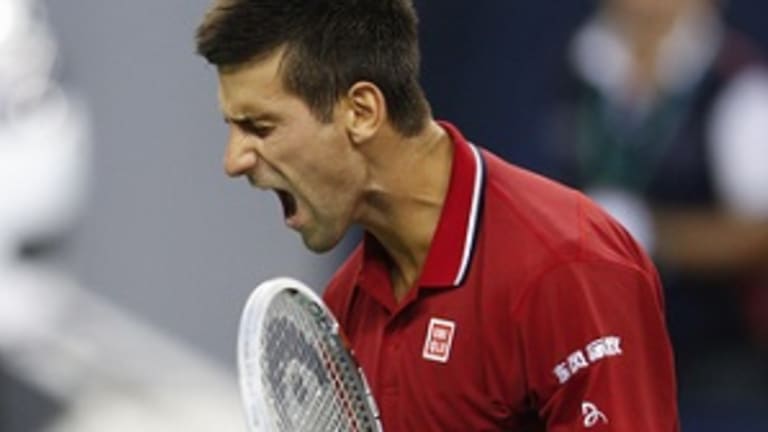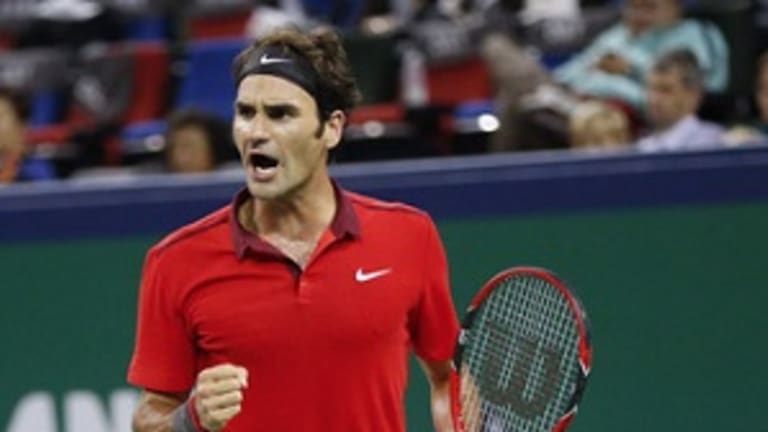Does it ever get old?
I’m talking about a clash between world No. 1 Novak Djokovic and No. 2 designate Roger Federer (he will officially surpass Rafael Nadal for the second spot when the new ATP rankings are issued on Monday). Federer and Nadal may be have produced the most historic of rivalries since the one between Pete Sampras and Andre Agassi, but the competition between Djokovic and Federer is less predictable, more subtle — and obviously a lot closer.
Federer and Djokovic will meet in the semifinals of the Shanghai Masters tomorrow with Federer ahead by a single match, 18-17. Given that Federer is already 33 years old (Djokovic is just 27) it’s hard to imagine Djokovic ever building the kind of margin Nadal already enjoys over Federer (23-10). That shopworn line by Mats Wilander, “How can a guy be the greatest of all time if there’s a guy in his own time whom he can’t beat?” will most likely haunt Federer for the rest of his days. It’s a different story with Djokovic.
The most noteworthy element in the rivalry that will be rejoined tomorrow is that the men are 2-2 so far this year. Neither player has won more than three consecutive matches since Djokovic broke Federer’s early domination after taking four successive losses to open the rivalry. That was way back in 2007, and those who would plead that Djokovic’s youth now gives him an advantage that might end up skewing the rivalry must also acknowledge that Federer’s greater maturity in those early years gave him a great head start. Credit Djokovic with having overcome it.
If you’re wondering which single surface allows Federer to still hold the lead, prepare to be surprised. It comes down to Federer’s 4-3 lead on clay. The men have split the only two matches they’ve played on grass, and on hard courts they’re also in a dead heat, 13-13.

